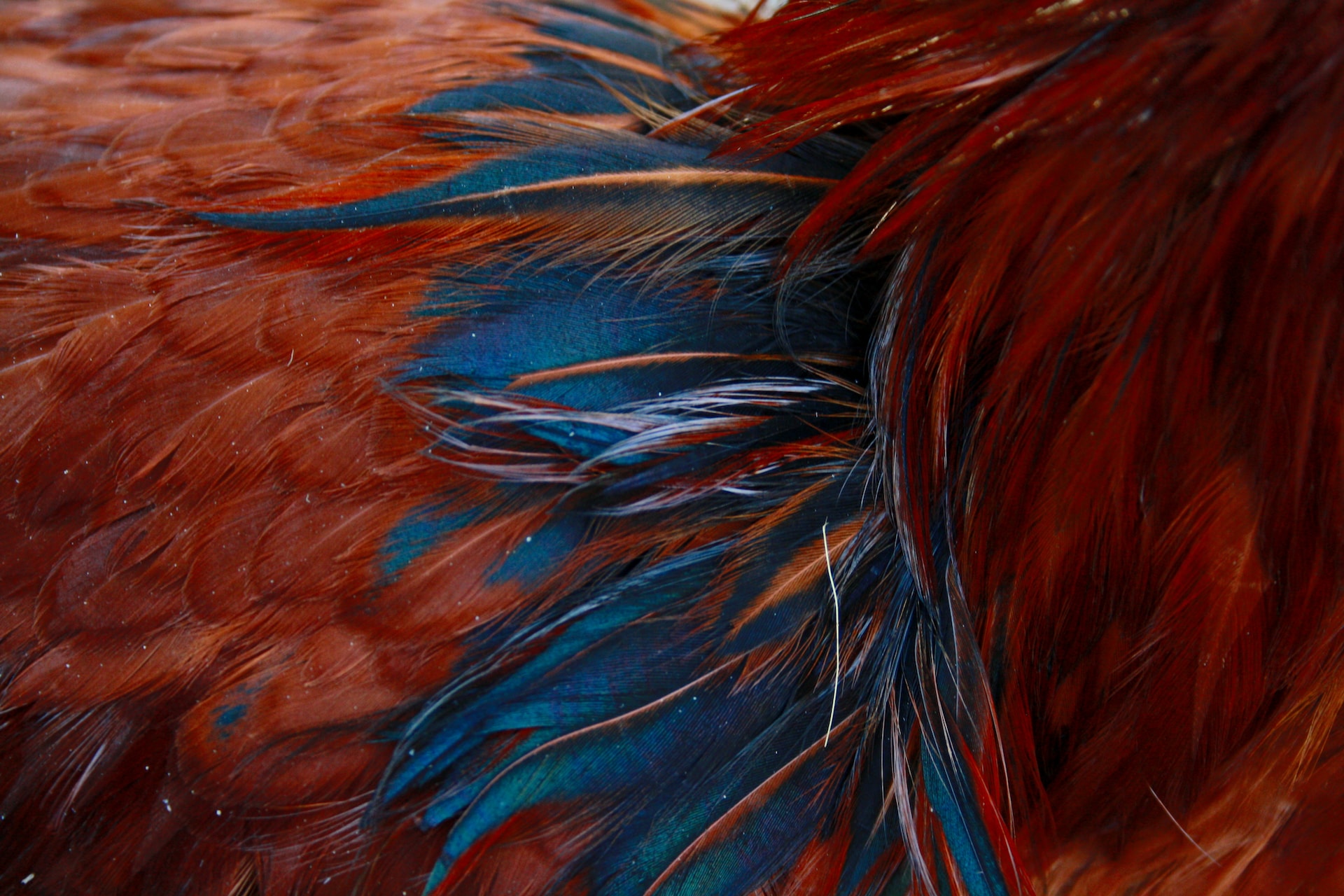Feathers provide countless opportunities for arrangements, adornments, and art!
Start with clean feathers. Feathers carry germs and mites; soak them for half an hour in a solution of 1/2 Isopropyl alcohol and 1/2 hydrogen peroxide. It will kill bacteria and brighten the feathers.
Collecting
Rooster feathers are used for many purposes, including dance and religious regalia, in fly fishing to tie salmon flies and to distinguish between roosters and hens. Rooster feathers are tough to find especially large saddle hackles and sickle feathers, which are the long feathers in the rooster’s tail.
Often it is easier to identify a young rooster from a hen because roosters develop combs and wattles earlier than hens, and they have a more prominent U-shaped crest on their head versus a more rounded comb for hens. They also have a more stocky, muscular build, and their legs are often longer than hens.
If you look at a rooster feather up close, you can see the shaft and barbs that run along the length of the feather. The base of the feather or fluff has a very dense, opaque area called a web. The barbules on the feather have hooks that connect, acting like a zipper locking them together and giving the feather its shape and structure.
Preparation
Before using feathers, ensure they are clean and prepared for painting because they can harbor parasites and pathogens. You can use a bit of alcohol or hydrogen peroxide to clean the feathers, then soak them in water. It kills any bugs and sanitizes the feathers for use in art.
Some people also freeze the feathers for 48 hours to kill any mites living in them. Another option is placing some citronella oil in the freezer bag with the feathers. People used to store their feathers in cedar chests for the same reason.
Load your brush with pyrrole red and titanium white when ready to paint the rooster. Start with the head and paint short strokes downward, letting the colors blend but not over-blending. Continue this pattern down the neck and into the tail feathers. For the body, add some phthalo blue and turquoise to the palette and load your brush with those colors.
Painting
Feather crafting is the practice of using feathers for decorative or practical purposes. Rooster feathers are practical masterpieces, providing warmth, protection, and color while helping birds fly faster and attract a mate at the right time of year. They have a central rachis with hooklets that interlock, like Velcro, with nearby barbules and can be modified in numerous ways for various uses.
The act of painting is the application of lines, forms, colors, tones, textures, and other components to a two-dimensional surface, such as a canvas or sheet of paper, to convey ideas and emotions. It can be used to represent real or imagined phenomena or to interpret a narrative theme.
To paint rooster feathers, double load your 3/4″ flat brush with Black and True Blue. Use the chisel edge of your brush and begin at the bottom of the feather, working upwards, adding pressure and widening your stroke as you get higher. Towards the top, add a bit of School bus yellow and Cardinal Red for punch.
Finishing
Rooster feathers create jewelry, headbands, hair accessories, and party decorations. They are available in many colors and textures and are helpful for various artistic activities.
The same protein that makes up your hair and fingernails, keratin, also makes up feathers.
Begin by laying down the construction lines for the comb on your rooster’s head and create curvy dips and peaks with small dots and lines. You can erase the construction lines once you are happy with your work.
Next, begin adding the detail for the main body. Use smaller dots and lines to add the appearance of individual feathers. Add more details as you go along, such as the feet. Lastly, you can add the tail coverts and sickles. These long, showy feathers cover the base of primary tail feathers in roosters and most of the tail in hens.



